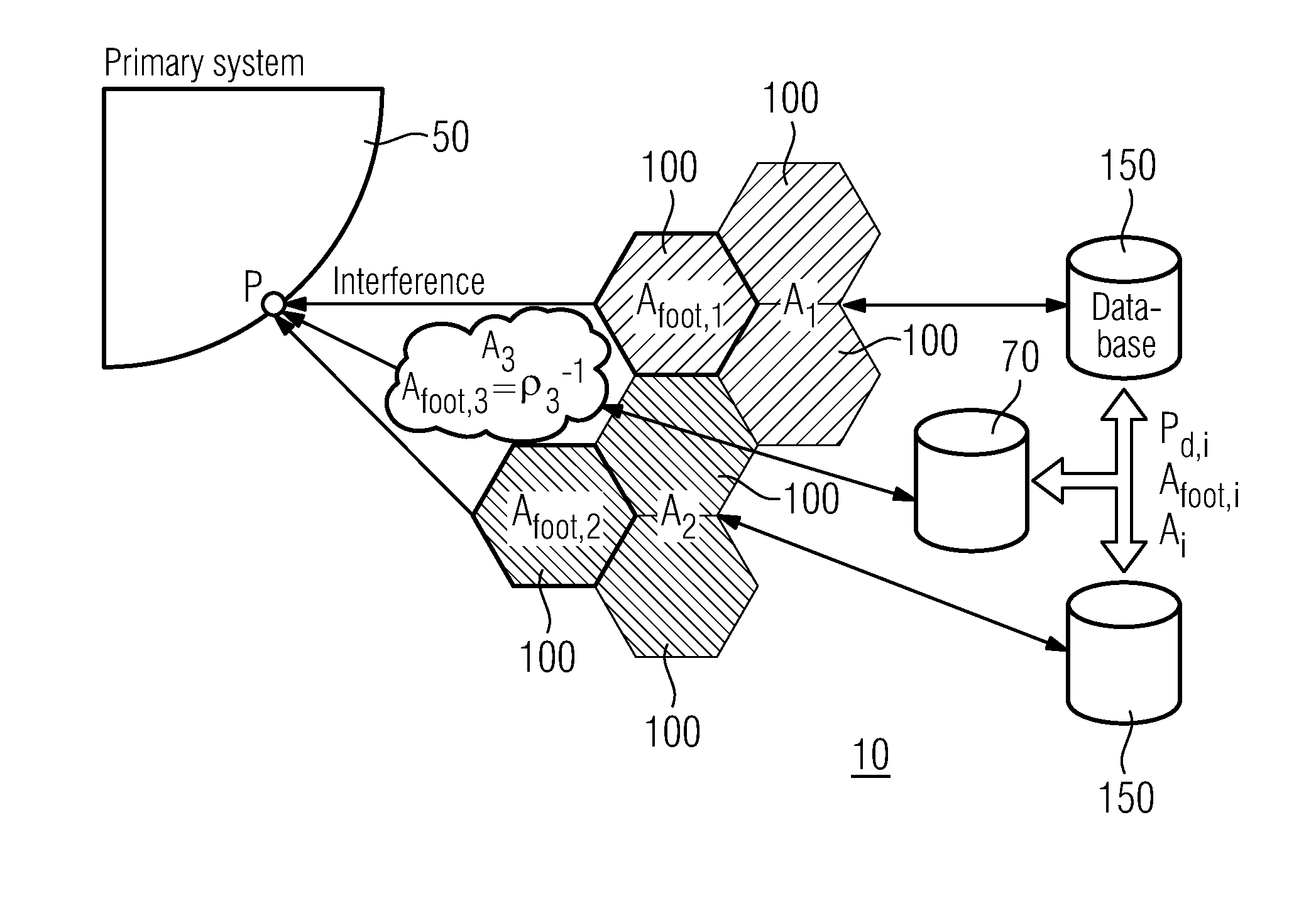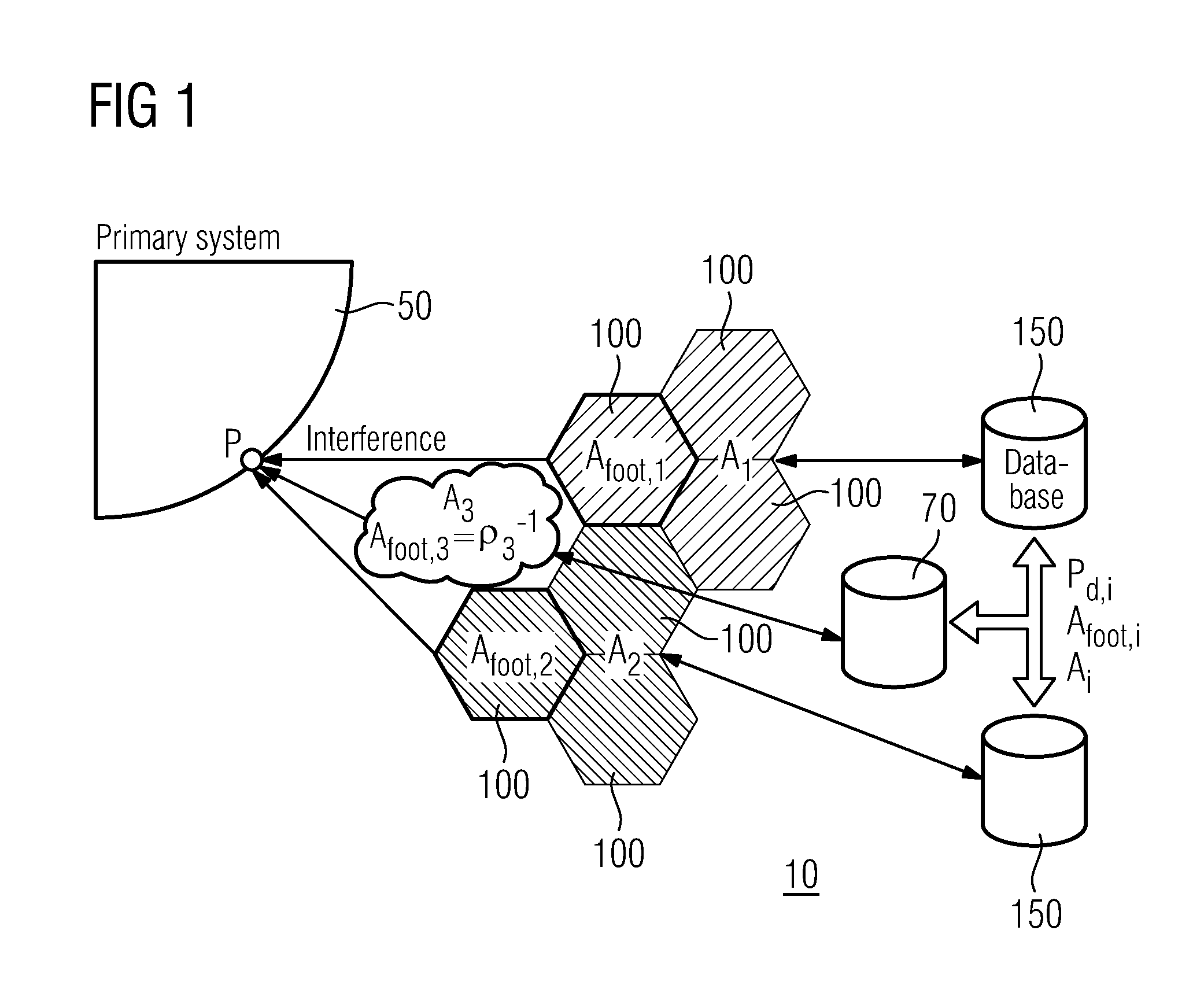Method and a system for controlling the aggregate interference in cognitive radio networks
a cognitive radio network and aggregate interference technology, applied in transmission systems, network planning, power management, etc., can solve the problems of computationally demanding task of computing aggregate interference based on the exact position of all secondary users, and the inability to provide accurate location of secondary users, etc., to achieve the effect of increasing the flexibility of controlling the aggregate secondary system
- Summary
- Abstract
- Description
- Claims
- Application Information
AI Technical Summary
Benefits of technology
Problems solved by technology
Method used
Image
Examples
Embodiment Construction
[0041]To prevent the primary TV system 50, FIG. 1 from suffering interference resulting from a number of secondary system 10 cells 100, the present invention proposes the following method and system for controlling the aggregate interference in a cognitive radio network. The term “cell” refers to a service area of a single or multiple WSD:s. The central unit can be e.g. a geolocation database.
[0042]The aggregate interference statistics (all its moments) at a given point P can be estimated locally based on a few simple parameters that each secondary network needs to provide. The required parameters from each secondary system cell 100 (for each i SU) are[0043]Coverage area Ai of the secondary system cell 100;[0044]Footprint (area) Afoot,i [m2] of the secondary system cell 100 (service area) or secondary transmitter density ρi [number of transmitters / m2]. These two parameters are related to each other through relation
Afoot,i=ρi−1 (1)[0045]Power density Pd,i of the secondary system ce...
PUM
 Login to View More
Login to View More Abstract
Description
Claims
Application Information
 Login to View More
Login to View More - R&D
- Intellectual Property
- Life Sciences
- Materials
- Tech Scout
- Unparalleled Data Quality
- Higher Quality Content
- 60% Fewer Hallucinations
Browse by: Latest US Patents, China's latest patents, Technical Efficacy Thesaurus, Application Domain, Technology Topic, Popular Technical Reports.
© 2025 PatSnap. All rights reserved.Legal|Privacy policy|Modern Slavery Act Transparency Statement|Sitemap|About US| Contact US: help@patsnap.com



